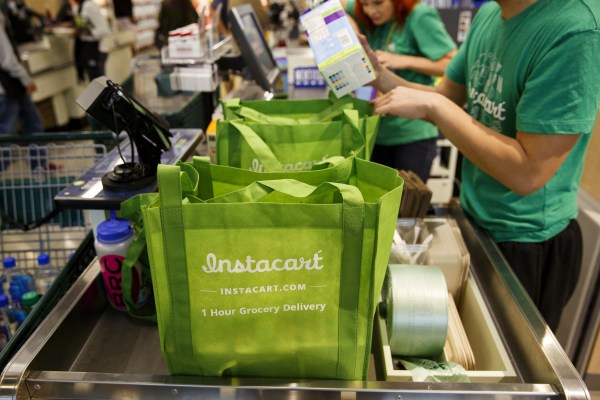Grocery delivery unicorn Instacart filed privately to go public yesterday, a long-awaited event for the well-known private company. During its startup days, Instacart raised huge amounts of capital and grew rapidly. When the pandemic arrived, Instacart’s business turbocharged as demand for its service reached a fever pitch.
The last year has been less kind. Growth slowed as Instacart lapped a year of revenue expansion driven by COVID-19 and more folks staying home and ordering in. That Instacart held onto some of that 2020 energy and managed to grow last year is something of a feat.
However, the company was not priced during its most recent venture capital rounds with slowing growth in mind, leading to Instacart revaluing itself earlier in the year. The action helped clear the path for more employee-friendly compensation and reset expectations for its exit.
That exit is now before us. We lack the company’s formal S-1 filing because Instacart took the “file privately before filing publicly to go public” route. But because we are now in the chute for an eventual Instacart IPO, let’s take stock of the company’s recent news and ask a few questions.
The key questions in our mind heading into Instacart’s debut concern its growth, economics and revenue mix. As you can imagine, these are interlinked.
How quickly is Instacart growing in 2022?
Reporting indicates that Instacart generated around $1.5 billion worth of revenue in 2020 and $1.8 billion last year. That slower pace of growth was effectively what forced the company to re-price as it decelerated and the market raised its standards.
All that is the past. What we care about now is how quickly Instacart is growing in 2022, and, critically, if it is at least matching its 2021 growth rate in percentage terms — which would imply faster growth in dollar terms, mind.
If it is, the company will be on pace to crest $2 billion worth of revenue in 2022. Investors are likely not expecting to see 2020-style growth from Instacart this year, but any deceleration from 2021’s pace would dramatically change the expected future cash flows from the company, bringing its near-term valuation under fresh pressure.
Growth is going to matter a heck of a lot for Instacart, and the above gives us a loose framework to dig through its eventual S-1 filing.
How strong are Instacart’s core economics?
Instacart has a few business lines, something we’ll touch on in a moment. However, we expect that the vast majority of the company’s revenues are generated from its grocery delivery business, and it’s not clear how strong that business is.
Putting aside an anticipated “contribution margin” conversation, the raw gross margin of grocery delivery is not visible from where we sit. Which is a bummer because, apart from growth, it will be the most important question that Instacart faces heading into its IPO.
Why? Because the stronger the gross margins that Instacart can yank out of grocery delivery, the less work it has to do elsewhere to paint a credible path to GAAP net income and positive free cash flow. (We presume given Instacart’s rapid-fire fundraising that it was running in the red on both numbers in recent quarters, as is standard for private companies after a major raise.)
We presume that the company will lean on adjusted EBITDA and other non-GAAP metrics when it does file, hoping that investors will focus on pre-chewed metrics more than standard figures. This worked for companies through 2021, though it remains somewhat untested in today’s changed market.
Regardless, the stronger that the business of delivering groceries truly is, the less that Instacart may have to wave its hands about future incomes. Put in a simpler fashion, if grocery delivery is not a good business from a gross profit perspective, Instacart will have a much steeper path ahead of it as it goes public.
How much progress has Instacart made in revenue diversification?
I doubt that Instacart is going to try to convince investors that it is a software company more than a delivery company, though its recent platform and software push seems to be a neat set of ideas. With that perspective in hand, just how much of the company’s top line comes from software will matter.
The more software revenue that Instacart can report, the more diverse its revenue will be, and likely stronger on a blended gross-margin basis to boot. The pace at which the company’s revenue mix is shifting toward software, then, will be a key method by which investors math out Instacart’s future profitability — and therefore its present-day value. The more the better. The less the worse.
I don’t have an estimate for you here other than single-digit percentage points in the first quarter. Watch this metric.
And that’s what we have for now. More the moment we get the S-1. May that be soon!
